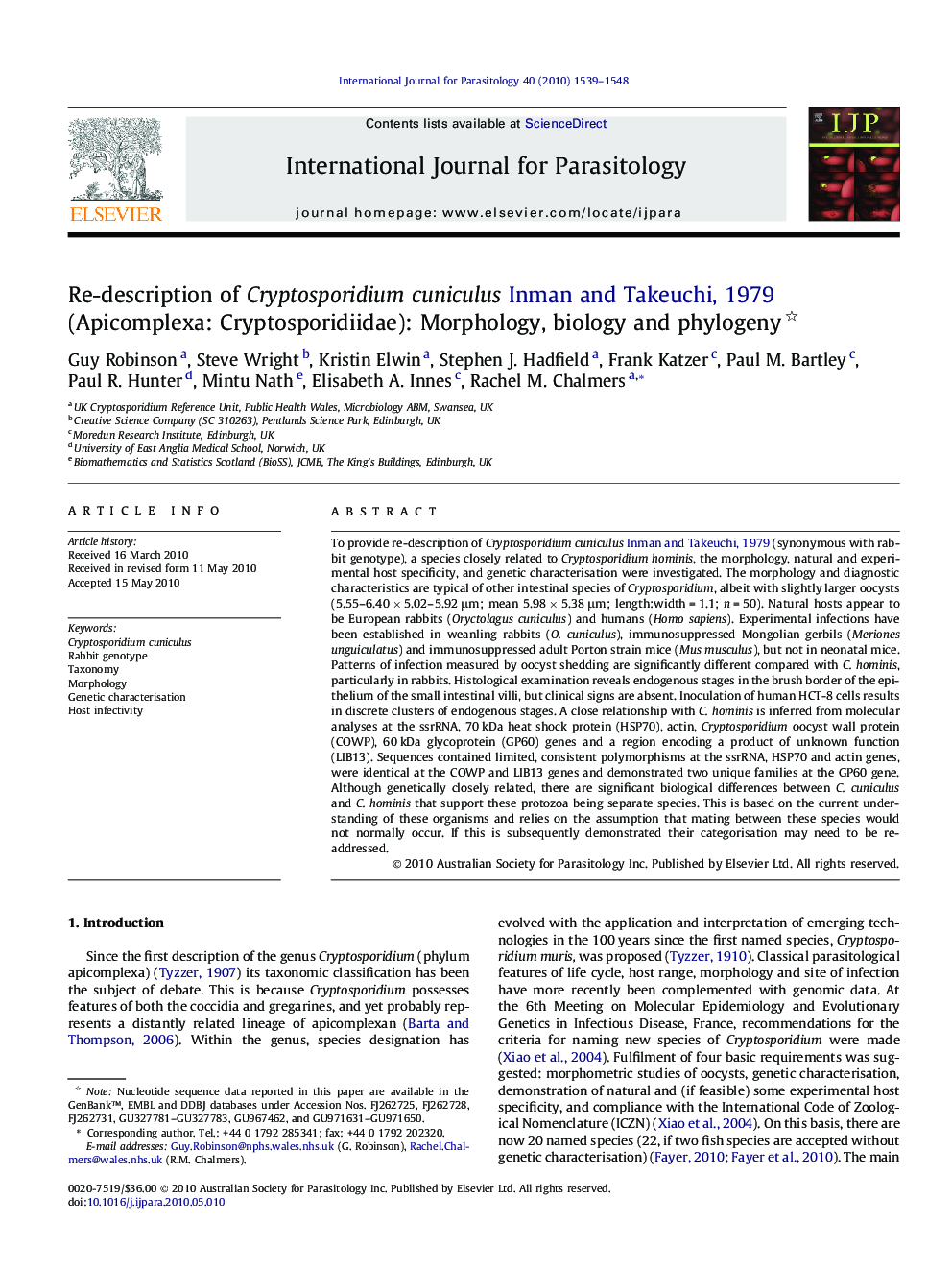| Article ID | Journal | Published Year | Pages | File Type |
|---|---|---|---|---|
| 2436342 | International Journal for Parasitology | 2010 | 10 Pages |
To provide re-description of Cryptosporidium cuniculus Inman and Takeuchi, 1979 (synonymous with rabbit genotype), a species closely related to Cryptosporidium hominis, the morphology, natural and experimental host specificity, and genetic characterisation were investigated. The morphology and diagnostic characteristics are typical of other intestinal species of Cryptosporidium, albeit with slightly larger oocysts (5.55–6.40 × 5.02–5.92 μm; mean 5.98 × 5.38 μm; length:width = 1.1; n = 50). Natural hosts appear to be European rabbits (Oryctolagus cuniculus) and humans (Homo sapiens). Experimental infections have been established in weanling rabbits (O. cuniculus), immunosuppressed Mongolian gerbils (Meriones unguiculatus) and immunosuppressed adult Porton strain mice (Mus musculus), but not in neonatal mice. Patterns of infection measured by oocyst shedding are significantly different compared with C. hominis, particularly in rabbits. Histological examination reveals endogenous stages in the brush border of the epithelium of the small intestinal villi, but clinical signs are absent. Inoculation of human HCT-8 cells results in discrete clusters of endogenous stages. A close relationship with C. hominis is inferred from molecular analyses at the ssrRNA, 70 kDa heat shock protein (HSP70), actin, Cryptosporidium oocyst wall protein (COWP), 60 kDa glycoprotein (GP60) genes and a region encoding a product of unknown function (LIB13). Sequences contained limited, consistent polymorphisms at the ssrRNA, HSP70 and actin genes, were identical at the COWP and LIB13 genes and demonstrated two unique families at the GP60 gene. Although genetically closely related, there are significant biological differences between C. cuniculus and C. hominis that support these protozoa being separate species. This is based on the current understanding of these organisms and relies on the assumption that mating between these species would not normally occur. If this is subsequently demonstrated their categorisation may need to be re-addressed.
Graphical abstractFigure optionsDownload full-size imageDownload high-quality image (137 K)Download as PowerPoint slide
